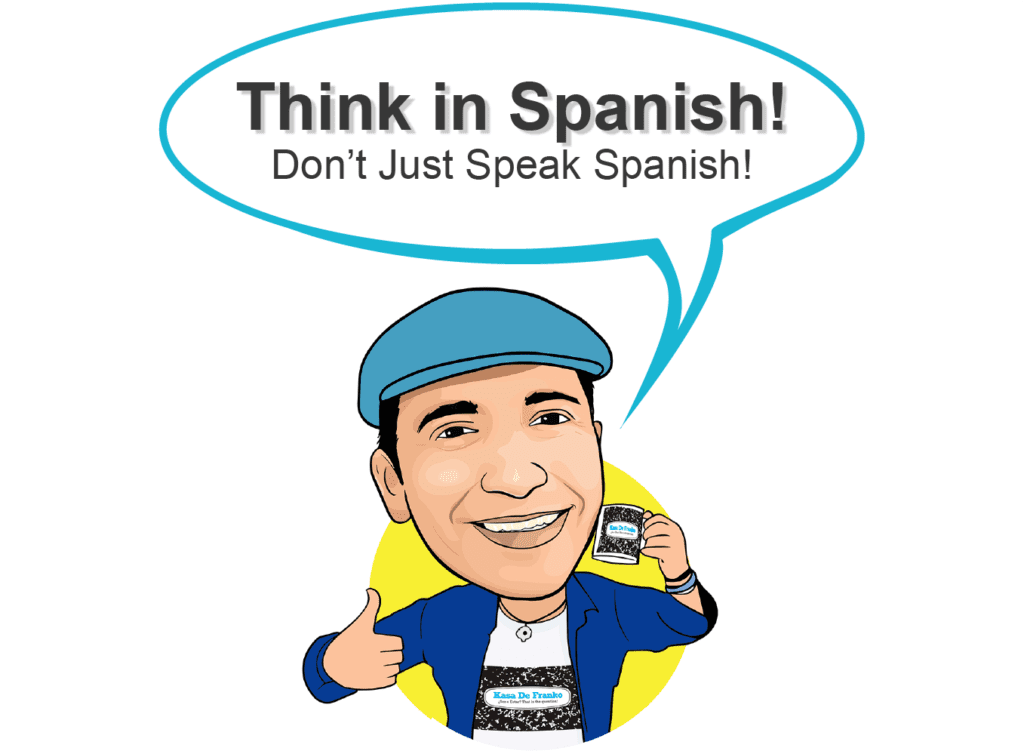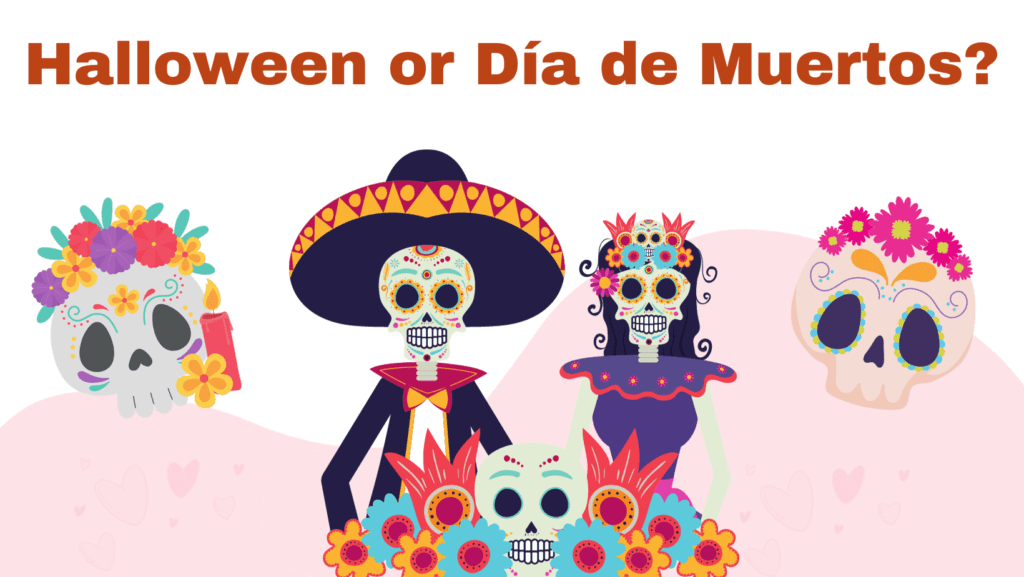
What’s the difference?
Halloween or Dia de Muertos? What do you celebrate? Get to know their differences and similarities in the Hispanic culture while you learn Spanish.
The differences and similarities between Día de los Muertos and Halloween are not as clear as you may think.
If we look into the origins of these festivities, apparently dissimilar, they are actually rooted in similar festivities that were passed on from the times of Celtic influence in Europe until the beginning of Christianity.
In other words, both festivities are pure and blunt syncretism. It is human history after all. Isn´t it?
Legend states that during the time of Día De Los Muertos the veil between the living and dead is thin and that spirits walk among us.

Why Are They Coming Back?
Whatever the dead’s reason for coming back is, I don’t know: But it’s kind of creepy, to be honest. Is it like a perpetual remake of Thriller every year? Who the hell knows? Yeah, maybe hell knows.
Maybe our loved ones are checking to see how big our beer belly has grown since they last saw it or if we are still paying the minimum balance on our credit cards.
Perhaps they’re just bored, and Heaven isn’t all it’s cracked up to be.
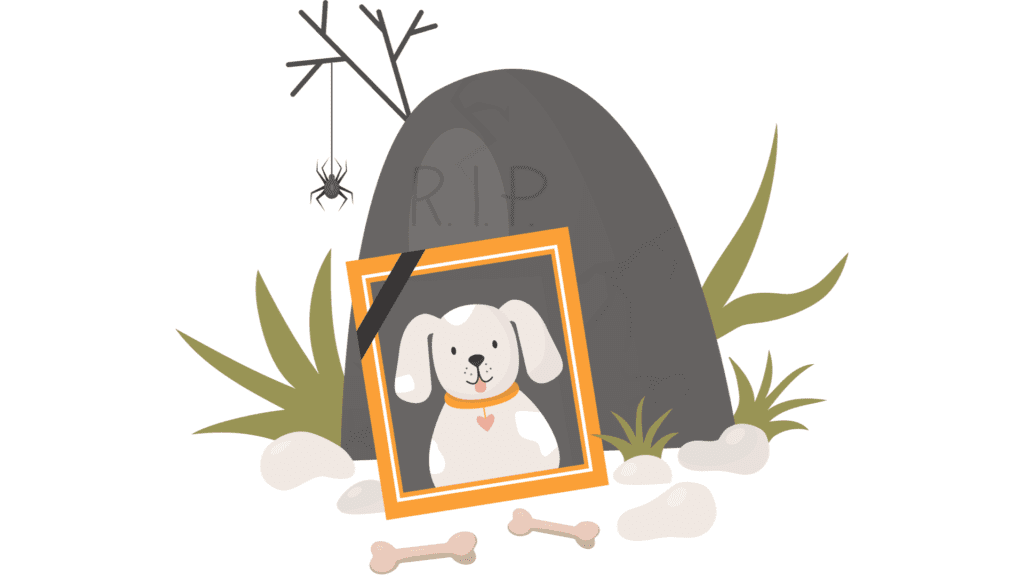
¡Los muertos a las tumbas!
Yes! The dead to the graves! Go back where you belong! No matter how much you care for your deceased loved ones, sometimes it is better when they stay put in the grave. But on Día De Los Muertos, that’s not up to us.
That’s their day and they will come out to celebrate and dance El baile de los zombies with you.
Which is why, from October 31st to November 2nd, those of Latin descent celebrate the lives of the dead by taking care of their graves, creating altars for them and honoring them—drinking, eating and dancing what the loved ones liked.
Someday, too, we will say bye-bye so it’s proper to pay respects.

Día de los Muertos en Mexico
In Mexico, specifically, families clean and decorate gravesites of loved ones on Día De Los Muertos. The dead are also remembered with “ofrendas,” small personal altars honoring a person.
Popular symbols of the holiday seen all over are Calacas y Calaveras (skeletons and skulls). They appear in candied sweets and are worn as mask in parades.
Día De Los Muertos correlates with the mandatory Catholic holiday All Saints’ Day a-k.a. All Hallows’ (November 1st and 2nd) where families attend Mass and also pay respects to the gravesites of deceased loved ones.
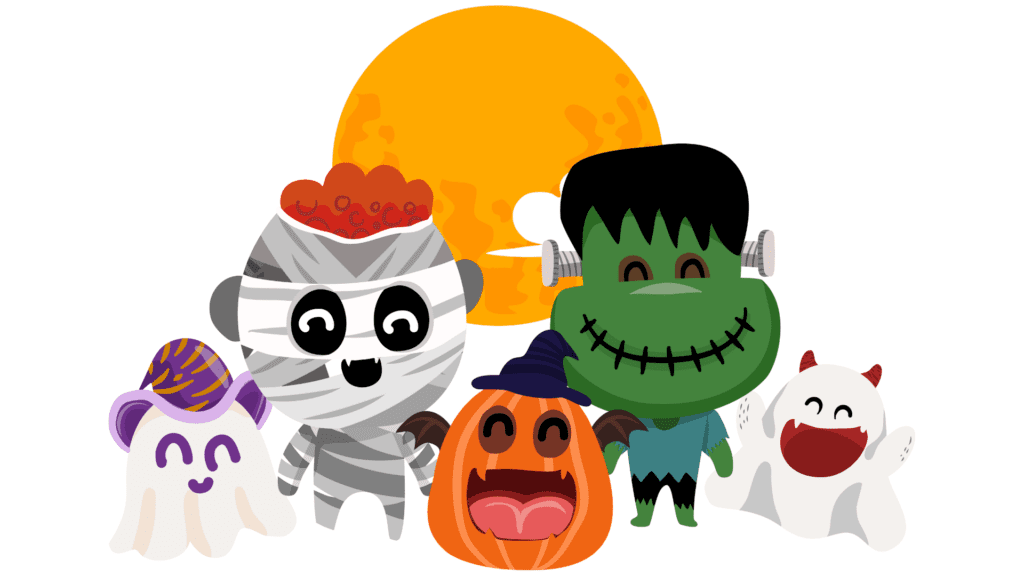
American Halloween
In America, the spooky holiday filled with pumpkins, tricks, and treats is called Halloween and takes place on October 31, which is the day before All Saints’ Day—which is All Hallows’ Eve, or All Saints’ Eve.
Thus, it was originally known as All-Hallows Eve, which gradually evolved into the term Halloween. Yes! That’s how we got to our Halloween in this third millennium.
Typically, kids get dressed up and go door to door to get candy from people, while adults on the weekend get dressed up, go to bars and get shitfaced drunk for a wild night of strange fun.
Women usually get a free pass on Halloween to dress up mucho sexy too.

What’s the difference then?
The significant difference between the two holidays is that America’s version is more commercialized and superficial, like the over-friendliness of a used car salesman trying to hock you a 97’ Buick.
Halloween, however, has deep historical roots that go back thousands of years to a time when Celtic Europeans celebrated the harvest and had giant bonfires, participating in pagan rituals, while keeping away evil spirits. The most known one is the Gaelic festivities of Samhain.
While the Catholic Church is a willing participant in Latin cultures, Halloween is seen by many Christian churches in America as some demonic holiday where Satan runs around and tempts everyone to sin.
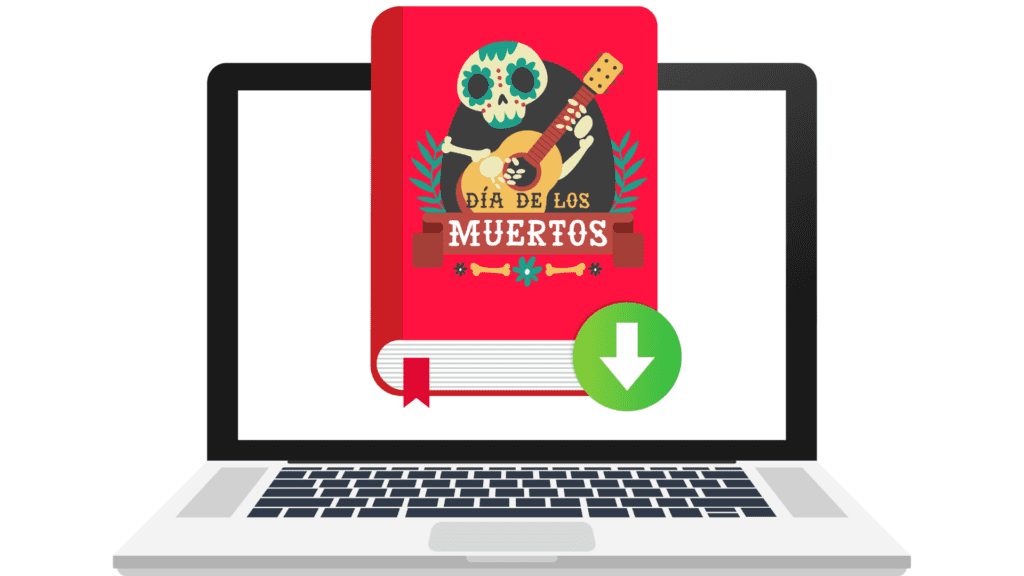
Dia de Muertos’ Significance
The major difference between Halloween and Día De Los Muertos is the homage paid to the dead, including the spirit of reverence towards loved ones.
In Latin cultures everyone celebrates Día De Los Muertos with incredible bright colors, flowers, and artwork that decorates the cities and villages.
Families show a respect and active belief that spirits are still vibrant, that the dead still serve a purpose.
In America, it’s all about getting free chocolate and dressing up for one night, without any relation to the dead or a spiritual significance.
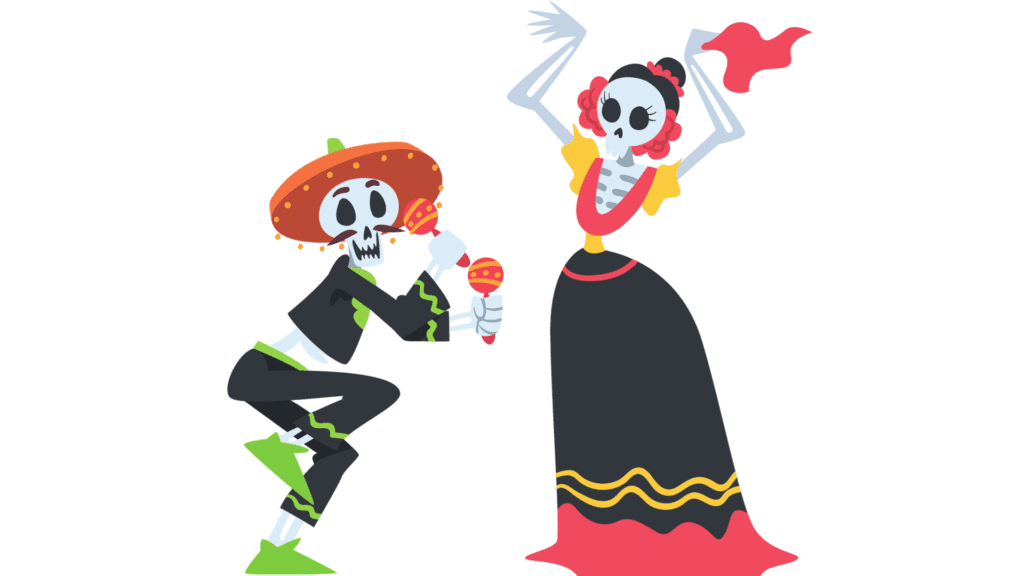
Dress Up
Both cultures like to play dress up during these two holidays. So, who will you be for Día De Los Muertos/Halloween? You could be anything you want: Shakira, Frida Khalo, Pablo Picasso, or Pitbull for a night! Maybe someone else!
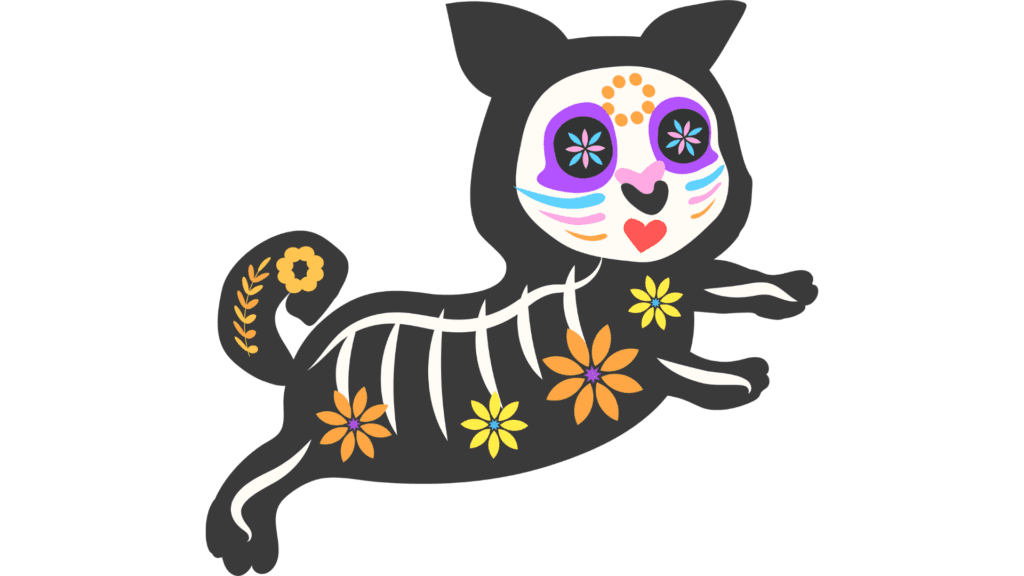
Dare to go Beyond Dressing Up!
Go for the real thing and learn Spanish to get to know the Hispanic culture better. If you take Spanish lessons at Kasa De Franko, then you’ll have the perfect conversational dialogue to go with your outfit. You can even go to bars and clubs most attended by Latino people and be quite the popular individual!
Just be careful to not get on any ghost’s bad side…or else you might become one yourself!
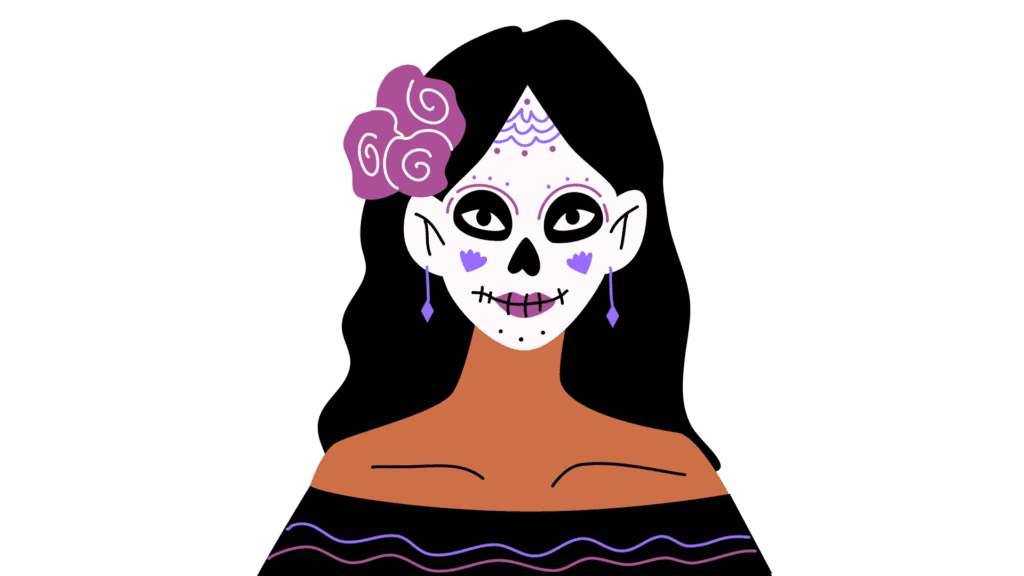
If Getting Undressed?
…You’d better learn some sexy phrases in Spanish. If you’re eager to explore more articles that delve into seductive phrases and alluring expressions, make sure to visit our section titled “Things Spanish People Say in the Bedroom.“
Within it, you’ll find the following articles:
• Dancing with Words, and

Sexy Words del Chupacabras
For those seeking to uncover more hot phrases before hitting the dance floor—drunk of course and dressed up as a drag queen, be sure to explore our Chupacabras series. When you’re ready to showcase your moves, don’t hesitate to reach out, and we’ll gladly impart some dance moves.
At Kasa de Franko, we also have a genuine passion for dancing and art. Take a look at our additional dance and music classes available at KDF because, as they say, “La vida es una danza” (Life is a dance).
Once you’ve acquainted yourself with these enticing and sexy words, use them wisely, for they possess a compelling allure. Words are powerful: Language is powerful! Get the tools you need to know how to use language properly. Book a free lesson with us!

Free Lessons
Snag a free lesson at Kasa de Franko and get the hang of essential phrases for everyday life. Our lessons are about more than just picking up explicit words; Spanish is a rich and vibrant language.
Grab your free Spanish lesson now and connect with fellow language learners who share your enthusiasm. Simply hit the red button below to kick off your language-learning journey.
Dive into the beauty of Spanish and all it has to offer, remembering always:
